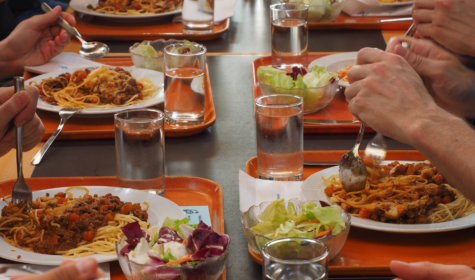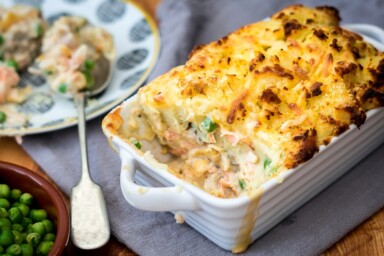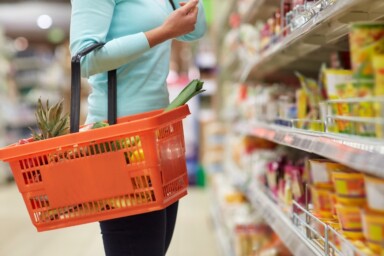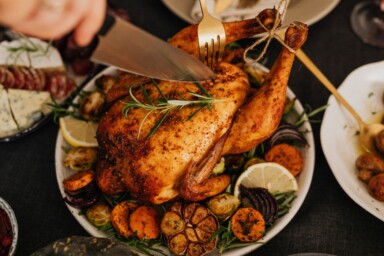In 2019, we published our Action Plan for Greener Prisons report which suggested that increased access to nature, including horticulture and gardening activities, could improve the mental health and wellbeing of prison inmates. Drawing on this research, our Senior Research Officer, Imogen Crossland, explores the rehabilitative potential of growing, cooking and eating good food in prisons.
Food is an essential part of day-to-day life. We need it to sustain ourselves, both in body and mind, but it also serves so many purposes beyond this. Whether it’s the joy of sharing a meal with loved ones or connecting with our cultural identity, a good meal can provide a moment of comfort, even on the toughest of days.
For the nearly 95,000 people living in prisons across the UK, food offers almost none of these things. Reviews into the state of prison food systems have found shocking results. A report by His Majesty’s Inspectorate of Prisons (HMIP) sums up the situation:
“… too often the quantity and quality of the food provided is insufficient, and the conditions in which it is served and eaten undermine respect for prisoners’ dignity. This does little to improve, what for many prisoners, is a history of an unhealthy lifestyle. It also potentially jeopardises prisoner and staff safety.”
While there is variation from prison to prison, some aspects of the meals are all too common across the prison estate. Lunch – often a sandwich – is served as early as 11am, and dinner (normally a carb-heavy hot meal), is served from 4pm. A breakfast pack (with a portion size described as being suitable for a small child) for the next day is handed out with dinner but usually gets eaten the same evening. Fresh fruit and vegetables are hard to come by and the snacks which are available from the prison tuck shop, or ‘canteen’, are mostly ultra-processed. Contrary to what many might envisage, most prison meals in the UK are eaten by prisoners alone in their cells. There are few opportunities to cook properly, and many prisoners will use kettles to cook their own food, which is not especially safe, and even fewer are able to grow food.
Some might ask why this matters at all – prison is, after all, seen as a form of punishment. The idea that poor-quality food should contribute to this punishment stems back to the birth of modern prisons in Victorian times. A principle known as ‘less-eligibility’ was written into the Poor Laws of 1834. It dictated that conditions in prisons and workhouses, including meals, should be worse than those experienced by the labouring poor, so as to disincentivise crime. While this principle has long been abolished, it remains ingrained to some extent in the public consciousness, fuelled by newspaper headlines about the ‘luxuries’ being afforded to undeserving prisoners.
“Contrary to what many might envisage, most prison meals in the UK are eaten by prisoners alone in their cells. There are few opportunities to cook properly, and many prisoners will use kettles to cook their own food, which is not especially safe, and even fewer are able to grow food.”
Reframing the role of food
In reality, transforming the role of food in prison offers significant potential to improve the health and wellbeing of prisoners – something which benefits not only the prisoners themselves but the entire prison service and society as a whole.
Simply improving nutritional intake can have a major impact, as three separate double-blind trials in the UK, US and the Netherlands have found. Providing a basic supplement containing vitamins, minerals and (in one case) omega-3 to prisoners, led to a reduction in the number of violent incidents of approximately one third, in comparison with a group taking a ‘placebo’ pill. That’s a staggering statistic which clearly recognises the links between diet and brain health – for which there is mounting scientific evidence. This is a potential solution which could be cost-effective for prisons to adopt now – but there are countless reasons why it’s worth going further than simply providing a pill.
While more difficult to measure, qualitative and anecdotal evidence is stacking up to shed light on the benefits of transforming prison meals, by offering more opportunities to grow, cook and connect with food, developing a richer food culture in prisons.
Making these kinds of improvements represents a serious challenge. For example, the list of available ingredients for prison food is determined by a single, national procurement contract for the whole prison estate, while the budget for prison food currently sits at around £3 per person per day, to cover all three meals. In comparison, the figure for schools is £2.65 per day for just one meal.
However, despite these constraints, the charity Food Behind Bars has been working with prisons and their catering teams to make meals healthier, tastier and more culturally diverse. They aim to scale their work up nationally, helping to reach as many prisons as possible.
“While more difficult to measure, qualitative and anecdotal evidence is stacking up to shed light on the benefits of transforming prison meals, by offering more opportunities to grow, cook and connect with food, developing a richer food culture in prisons.”
Food Behind Bars also run food education sessions and courses, from butchery to beekeeping, which help participants to develop skills, both practical and ‘soft’ skills like communication and teamwork. Initiatives like these, such as cooking classes and sharing meals around a table (something that many in prison aren’t able to experience), and learning how to grow fruit and vegetables, have outcomes that consistently report improvements in mental health, self-esteem, social skills and confidence.









